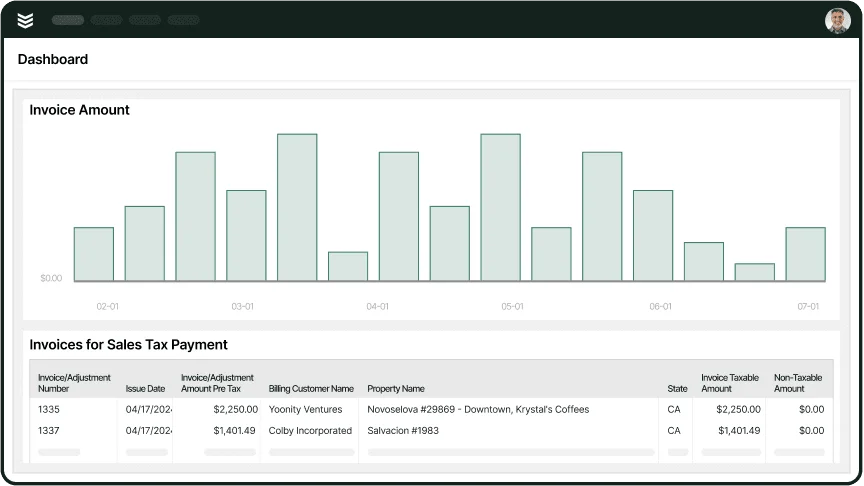Running a crew of field service techs takes coordination. Schedules change, equipment needs tracking, and customers expect fast, reliable service. One mistake can lead to delays, frustrated clients, and lost revenue. Field workforce management keeps everything on track—helping contractors organize teams, track productivity, and make smart, real-time decisions.
Whether you're refining your processes or setting up a new system, you'll find clear, actionable steps to keep operations running smoothly. This guide breaks down the essentials, including:
- What is field workforce management?
- How to implement field workforce management into your operations
- 10 field workforce management tips & best practices to follow
- 6 benefits of using field workforce management software rather than manual processes
- 5 field workforce management software features to look for
- Top 4 field workforce management software for all contractor types
Before getting into strategies and tools, let’s start with the basics. Understanding field workforce management makes it easier to put the right systems in place.
What is field workforce management?
Field workforce management is the process of organizing, scheduling, and enhancing mobile teams to complete jobs efficiently. It involves tracking resources, assigning tasks, managing schedules, and ensuring clear communication between the crew and office to improve productivity and service quality.
A well-run field workforce keeps operations smooth, reduces downtime, and ensures that the right workers, tools, and materials are in place when needed. Without proper management, delays pile up, costs rise, and customer satisfaction drops. Technology plays a major role in the field service industry. Software solutions help automate scheduling, monitor job progress, and provide real-time updates—giving managers better visibility and control over field operations.
What does a quality field workforce management process look like?
A strong field workforce management process keeps jobs on schedule, technicians productive, and customers satisfied. Here’s what it includes:
- Real-time scheduling – Jobs are assigned based on technician availability, skill set, and location to maximize efficiency.
- Clear communication – Field teams and office staff stay connected with live updates, job details, and changes.
- Performance tracking – Managers monitor job completion times, technician efficiency, and customer feedback to improve workflows.
- Inventory & resource management – Ensures tools, equipment, and materials are available when and where they’re needed.
- Automated reporting – Reduces paperwork and helps managers make data-driven decisions.
When all these elements work together, contractors can handle more jobs in less time, reduce errors, and improve service quality.
What does a successful field workforce manager do?
A great field workforce manager keeps operations running smoothly by balancing schedules, tracking performance, and solving problems as they arise. Their key responsibilities include:
- Optimizing job assignments – Ensuring the right workers are on the right tasks to avoid bottlenecks.
- Monitoring real-time progress – Tracking job statuses and making quick adjustments when needed.
- Keeping teams accountable – Reviewing performance data, setting benchmarks, and addressing inefficiencies.
- Improving communication – Bridging the gap between field crews and office staff to prevent miscommunication.
- Adapting to challenges – Handling last-minute changes, unexpected delays, or emergency jobs without disrupting schedules.
- Managing technician workload – Distributing jobs evenly to prevent burnout and keep performance high.
- Leveraging technology – Using workforce management software to automate scheduling, track job progress, and reduce manual work.
- Enhancing customer satisfaction – Ensuring service quality by addressing customer concerns and keeping response times low.
A skilled field workforce manager keeps technicians productive, reduces job delays, and ensures customers get reliable, on-time service.
How to implement field workforce management into your operations
Managing a field workforce isn’t guesswork—it takes a structured approach. Implementing the right processes ensures jobs run smoothly, technicians stay productive, and customers get reliable service. Here’s how to put an effective field workforce management system in place:
- Assess current operations – Identify gaps in scheduling, job tracking, and team coordination. Look at delays, inefficiencies, and customer complaints to see where improvements are needed.
- Define key objectives – Set clear goals for workforce management, whether it’s reducing downtime, improving job completion rates, or enhancing real-time communication.
- Invest in the right tools – Choose workforce management software that streamlines scheduling, dispatching, tracking, and reporting. The right system eliminates manual errors and keeps operations efficient.
- Standardize processes – Create clear workflows for job assignments, technician check-ins, inventory management, and reporting. This ensures consistency across teams and prevents miscommunication.
- Improve communication channels – Establish direct lines between office staff and field teams using mobile apps, real-time updates, and automated notifications. Quick response times prevent bottlenecks.
- Train your workforce – Ensure technicians and managers understand new tools and processes. A well-trained team adapts faster and makes the most of workforce management systems.
- Monitor and optimize performance – Track key metrics like job completion time, technician efficiency, and customer feedback. Use data to fine-tune operations and address weak points.
Implementing a solid field workforce management system is just the start. To keep operations running smoothly, you need to follow best practices that optimize performance, reduce costs, and improve service quality. Let’s dive into the top tips for success.

Explore our service management suite
Equip your techs in the field with the tools they need to work smarter and faster.
10 field workforce management tips & best practices to follow
Managing a field workforce takes more than scheduling jobs—it requires efficiency, communication, and the right tools. Follow these best practices to keep your operations running smoothly.
1. Optimize scheduling for efficiency
A service company schedules technicians for jobs across the city, but without a clear system, techs are driving back and forth between job sites, wasting hours on the road. Some are double-booked, while others have idle time.
A structured field workforce scheduling system prevents these inefficiencies. Assign jobs based on technician location, skill set, and availability to reduce travel time and balance workloads. Prioritize urgent repairs while filling gaps with routine maintenance calls. Optimized scheduling means more completed jobs, lower fuel costs, and fewer frustrated customers.
2. Automate repetitive tasks
A dispatcher spends the first two hours of their day manually assigning jobs, sending text messages to techs, and updating spreadsheets. By noon, they are already scheduling conflicts, job delays, and missed customer updates. Field workforce automation eliminates these problems.
A field workforce management software auto-assigns jobs based on skill level and proximity, sends real-time updates, and tracks job completion. This means dispatchers can focus on solving urgent issues instead of dealing with repetitive admin work. Automation keeps schedules tight, reduces errors, and improves response times.
3. Improve real-time communication
A technician arrives at a job site only to realize they don’t have the right tools or parts. The office has no idea they’re stuck, and the customer is left waiting. This kind of breakdown slows down the entire operation. A direct communication system between the field and the office solves this.
A technician mobile app with job updates and notifications keeps everyone on the same page. If a tech runs into an issue, dispatch can immediately reroute another team member or deliver the needed materials. Real-time communication prevents job delays, improves service quality, and keeps customers informed.
4. Track technician performance
A contractor notices that some jobs take twice as long as expected, but there’s no data to explain why. Are techs undertrained? Are certain job sites causing delays? Without tracking performance, it’s impossible to pinpoint the issue.
Measuring key performance metrics—such as job completion time, first-time fix rates, and customer feedback—gives managers insight into where inefficiencies exist. With this data, they can adjust schedules, provide additional training, and ensure every tech is working at peak efficiency. Tracking performance helps identify bottlenecks and improve service quality.
5. Standardize job workflows
One technician installs an HVAC system using one process, while another tech does it differently. When a customer calls about an issue, the office has no idea which method was used. This inconsistency leads to confusion, mistakes, and callbacks.
A standardized workflow ensures every job follows the same process. Create step-by-step procedures for installations, repairs, and maintenance tasks. Provide checklists that techs must complete before marking a job as done. Consistency reduces errors, makes training easier, and ensures customers receive the same high-quality service every time.
6. Optimize route planning to reduce travel time
A technician finishes a job and realizes their next service call is 30 miles away—on the opposite side of the city. Traffic adds another 45 minutes, delaying the next appointment and frustrating both the tech and the customer.
Fleet management software solves this by mapping out the most efficient paths for service calls. Instead of wasting time crisscrossing a city, technicians are assigned jobs based on location, cutting down on fuel costs and travel time. Fewer miles on the road mean more jobs completed per day and lower vehicle wear and tear.
7. Keep track of inventory and job materials
A field tech arrives at a commercial site to repair a refrigeration unit, only to realize they don’t have the right replacement part. They now have to leave, pick up the part, and return—adding hours to the job and delaying other scheduled work.
A real-time inventory tracking system prevents this. By integrating inventory management with workforce software, techs can check material availability before heading to a job. If a part is running low, automated alerts ensure restocking before it becomes an issue. This keeps jobs on schedule and reduces wasted trips.
8. Provide ongoing training for technicians and staff
A new technician struggles to troubleshoot a complex electrical issue, delaying the job and frustrating the client. Meanwhile, a senior tech who could have handled it is across town on a routine maintenance call.
Regular training and upskilling programs ensure all technicians are equipped for a wide range of jobs. Cross-training staff in multiple service areas increases flexibility, allowing managers to assign work more efficiently. Investing in training also improves job performance, reduces costly mistakes, and increases employee retention.
9. Use data to improve decision-making
A contracting company notices that service delays are becoming a pattern, but without data, they can’t determine the root cause. Is it scheduling conflicts? A shortage of skilled labor? Poor route planning? By analyzing workforce data, managers can pinpoint issues and make informed adjustments. Metrics like job duration, technician efficiency, and customer satisfaction scores reveal where improvements are needed.
Field service reporting software provides real-time insights into job performance, technician efficiency, and service trends. By analyzing this data, managers can identify bottlenecks, adjust schedules, and optimize field operations.
10. Prioritize customer experience
A client calls to check on their service appointment, but the dispatcher has no update. The technician is running late, and no one has informed the customer. This lack of communication leads to frustration and negative reviews. Providing proactive customer updates through automated notifications, live tracking, and follow-up messages ensures clients stay informed. Offering easy rescheduling options and gathering feedback after each job builds trust and strengthens customer relationships.
A dedicated CRM system helps track customer interactions, service history, and appointment details in one place. Integrating this with the whole process of field workforce management gives dispatchers and technicians instant access to job updates, client preferences, and past service records.
6 benefits of using field workforce management software rather than manual processes
Managing a field workforce manually means juggling schedules, job updates, and technician tracking with spreadsheets, phone calls, and paperwork. That’s a slow and error-prone way to run operations. Missed appointments, frustrated customers, technician burnout, and ultimately lost revenue are common outcomes when field management is done without the right tools. Even small errors can snowball, causing delays that impact your business’s bottom line and reputation.
Here’s why switching to field workforce management software is a game-changer:
1. Increased job scheduling accuracy
Manual scheduling leads to overbooking, double assignments, and inefficient job distribution. Scheduling software automatically assigns jobs based on availability, location, and skill set, ensuring the right tech is sent to the right job without conflicts or unnecessary travel time.
2. Real-time visibility into field operations
With manual tracking, managers rely on phone calls or guesswork to check technician status. A field technician app provides real-time GPS tracking, job status updates, and live dashboards, giving instant visibility into where each technician is and how jobs are progressing.
3. Reduced administrative workload
Office staff spend hours on scheduling, data entry, and payroll calculations when done manually. CRM dispatch software automates these tasks, freeing up time for dispatchers and managers to focus on higher-priority work instead of getting buried in paperwork.
4. Fewer delays and service disruptions
Without automated alerts, job delays often go unnoticed until a customer complains. Field workforce management software provides instant notifications for schedule changes, job updates, and technician availability, helping managers adjust quickly to keep jobs on track.
5. Improved customer communication
Customers hate waiting without updates. Manual processes make it easy to forget to notify clients of delays or appointment changes. Software automates customer notifications, sends reminders, and allows real-time tracking of technician arrivals, improving service transparency and client satisfaction.
6. Better data for smarter decision-making
Spreadsheets can’t provide deep insights into workforce efficiency. The software collects and analyzes data on job completion times, technician performance, and operational costs, helping managers make informed decisions that reduce inefficiencies and increase profitability. Having the option to integrate your existing accounting software is one way to help with this.
Switching from manual processes to workforce management software eliminates bottlenecks, reduces errors, and keeps operations running efficiently. But not all software solutions are the same—some have critical features that make managing a field workforce even easier. Let’s look at the top five features to prioritize when choosing a system.
5 field workforce management software features to look for
Not all field workforce management software is created equal. The best solutions come with features designed to eliminate inefficiencies, improve visibility, and keep teams connected. Here are five must-have features to look for:
- Real-time scheduling and dispatching - Delays happen when schedules are manually updated or dispatchers rely on calls and texts to communicate with technicians. Real-time scheduling allows instant job assignments, automated updates, and live technician tracking. This ensures that the closest and most qualified tech is sent to the right job, reducing downtime and unnecessary travel.
- GPS tracking and route optimization - Without visibility into technician locations, managers rely on guesswork to estimate arrival times and assign jobs. Integrated GPS tracking and route optimization help dispatchers monitor real-time locations, reduce fuel costs, and avoid inefficient routing. With smart route planning, techs spend less time on the road and more time completing jobs.
- Mobile access for field technicians - Field technicians need instant access to job details, work orders, and customer history. A mobile-friendly platform lets techs receive assignments, update job statuses, and capture customer signatures right from their phones. This eliminates paperwork, reduces errors, and keeps teams connected no matter where they are.
- Automated job reporting and analytics - Managers need data to improve workforce efficiency, but tracking performance manually is time-consuming. Automated reporting tools generate insights on job completion times, first-time fix rates, and technician productivity. With built-in analytics, businesses can identify bottlenecks, improve scheduling, and optimize resource allocation.
- Customer communication and notifications - Customers expect updates, but manual outreach leads to missed calls and frustrated clients. Automated customer notifications send real-time updates, appointment reminders, and estimated arrival times. Keeping customers informed improves satisfaction and reduces no-shows, leading to better service and stronger client relationships.
- Invoicing and payment processing - Manual invoicing leads to delays, lost paperwork, and missed payments. Built-in invoicing and payment processing allow technicians to generate invoices on-site, accept digital payments, and sync billing with accounting software. Faster invoicing means improved cash flow, fewer administrative headaches, and a smoother payment experience for customers.
Choosing the right workforce management software depends on your business needs. Some platforms specialize in commercial contracting, while others focus on residential service or technician mobility. Let’s explore the best solutions available for different contractor types.
Top 4 field workforce management software for all contractor types
Selecting the appropriate field workforce management software is crucial for streamlining operations and maximizing productivity. Below are some of the leading solutions, each excelling in different areas to cater to diverse contractor requirements.
1. Best for commercial: BuildOps
BuildOps is an all-in-one platform built specifically for commercial contractors, combining scheduling, dispatching, reporting, and job tracking into a single system. It provides real-time insights into field activities, allowing managers to optimize technician assignments, reduce downtime, and improve overall operational efficiency. With its seamless integration of workforce management tools, BuildOps ensures better coordination between office staff and field teams, helping commercial service businesses scale without added complexity.
Why This is Best for Commercial: BuildOps is designed to handle the complexity of large-scale commercial operations, offering advanced scheduling, reporting, and automation tools tailored to contractors managing multiple teams and job sites—all in one platform.

Curious to see how BuildOps works?
We help get jobs scheduled faster, reduce delays, and keep teams moving.
2. Best for residential: Housecall Pro
Image Source: Housecall Pro
Housecall Pro is an all-in-one field service management platform tailored for residential service businesses such as HVAC, plumbing, electrical, and cleaning services. It offers user-friendly tools that streamline scheduling, dispatching, invoicing, and customer communication, enabling businesses to enhance efficiency and provide superior customer service. While Housecall Pro offers a comprehensive suite of features, it may not provide the advanced reporting and analytics capabilities that larger commercial contractors require.
Why This is Best for Residential Services: Housecall Pro's intuitive interface and comprehensive feature set are specifically designed to meet the needs of residential service providers, making it easier to manage daily operations and improve customer satisfaction.
3. Best for field technicians: FieldEdge
Image Source: FieldEdge
FieldEdge is a user-friendly field service management solution tailored for field technicians across various service industries. It offers essential tools to manage scheduling, dispatching, invoicing, and customer information, helping businesses streamline operations and improve profitability. While FieldEdge offers a robust set of features suitable for small to mid-sized businesses, it may lack the scalability and advanced project management tools required by larger enterprises.
Why This is Best for Field Technicians: FieldEdge's straightforward interface and essential features make it an excellent choice for technicians seeking to improve operational efficiency without the complexity of larger systems.
4. Best for general contractors: Jobber
Image Source: Jobber
Jobber is a versatile field service management platform ideal for general contractors and small to mid-sized service businesses. It offers tools to manage quoting, scheduling, invoicing, and client communications, aiming to simplify day-to-day operations and improve customer satisfaction. While Jobber offers a range of features suitable for small to mid-sized operations, it may not provide the depth of customization and integration capabilities required by larger commercial contractors.
Why This is Best for General Contractors: Jobber is designed for small to mid-sized service businesses, making it a great fit for general contractors who need simple scheduling, invoicing, and job tracking.
Managing a field workforce is no small task. From scheduling and dispatching to tracking performance and handling customer communications, the right software makes all the difference. While many tools specialize in one or two areas, few offer the complete package that commercial contractors need.
BuildOps brings all these essential features under one roof—real-time scheduling, GPS tracking, field reporting, automated invoicing, and more. Many of the tools we covered here have solid capabilities, but not all provide the level of integration, reporting, and scalability that growing businesses require.

Take a closer look at BuildOps
Streamline your workforce management so crews stay aligned and on track.










